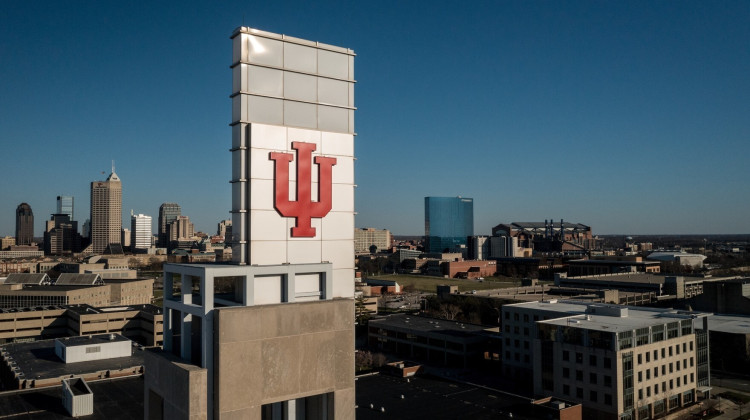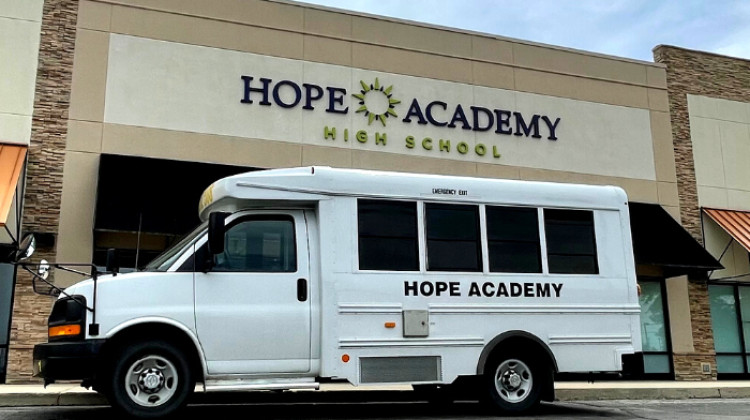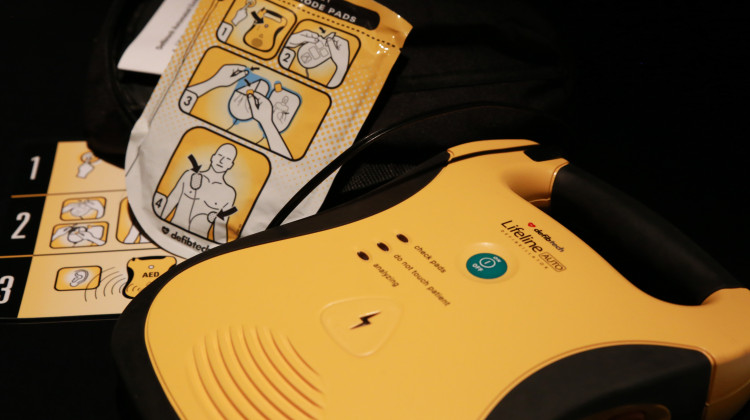
Sarah Platt, left, and Rachelle Gardner, right, participated in a Twitter Spaces conversation on youth substance use.
Courtesy of Hope AcademyThe pandemic could have had one positive effect on young Hoosiers: less substance use. An August report from Indiana University found that over the past two years, youth cigarette, alcohol and marijuana use hit some of their lowest rates in more than 30 years.
The 2022 Indiana Youth Survey, conducted by Prevention Insights in IU’s School of Public Health, also found youth vaping decreased from 2020 to 2022.
“Prior to the pandemic, vaping was a huge cause of concern,” said WFYI and Side Effects Public Media reporter Darian Benson, who spoke during a Twitter Spaces conversation Sept. 21. “We started to see lung injuries associated with vaping and even deaths ... Health experts and advocates feared the increase in vaping was undoing years of work to reduce nicotine usage among youth.”
A national survey on youth drug and alcohol use also found lower use of alcohol, marijuana and drugs like cocaine and non-prescription amphetamines and opioids over the course of the pandemic.
Is this the start of a trend? To learn more, WFYI Digital Editor for Health and Education Lauren Bavis spoke with Benson; Rachelle Gardner, executive director of Hope Academy High School, a recovery high school in Indianapolis; and Sarah Platt, a peer recovery specialist and Hope Academy graduate.
Why did substance use decrease?
Researchers and those who work with young people say it’s too soon to tell if these national and statewide surveys are the start of a trend – or if they even show the full picture of youth substance use.
“It’s important to note, in the survey students were self-reporting their substance use habits,” Benson said. “And one of the leaders of the national survey kind of questioned if students were being honest about their substance use habits.”
Gardner of Hope Academy pointed out that students take the survey at school, and those who use drugs might not be regularly attending class.
That’s where a school like Hope Academy can make a difference, she said. The recovery high school on Indianapolis’ south side can serve up to 65 students from ninth to 12th grade. Because it’s a small school, class sizes are smaller, which can be helpful for students who’ve missed instruction because of their substance use, and whose developing brains may also have been impacted by drug use.
“So a smaller environment is really more impactful to helping them feel successful in the classroom,” she said. “Once they start feeling successful in the classroom, then they start feeling successful in the other changes that they’re making.”
How can adults talk to teens about substance use?
Before she became a recovery coach, Platt attended Hope Academy for 11th and 12th grades. Now, she works with students one-on-one to help navigate their recovery.
“We talk through things going on at home, things going on at school, sobriety,” Platt said, “and we try to make plans that work with them and can make them the best they want to be.”
Platt remembers in high school while she struggled with substance use, the excitement of using drugs quickly turned to shame. Young people who struggle with addiction might hide their substance use.
Platt said parents, teachers and others who work with young people can have more productive conversations with teens about substance use when they consider their perspective.
“Just going into whatever the conversation is without judgment, with love, letting them know that you’re there to help them and not make them feel ashamed can really change the trajectory of a conversation,” she said.
How does youth substance use intersect with mental health challenges?
Gardner, who speaks regularly with both parents and teachers, has become more convinced that mental health and substance use issues are, in fact, increasing among young Hoosiers, despite what national and state reports suggest.
“I can tell you that this year we have more young men that are coming to us telling us how anxious they are and using substances to help with that anxiety is just increasing,” Gardner said.
Gardner and Platt said adults have better coping skills to navigate their emotions, which can include using legal substances like alcohol. But without access to drugs and alcohol, young people can take what seem like extreme measures – such as taking high doses of medications like Benadryl – to cope with anxiety, depression or other mental health challenges.
“When it comes to dealing with emotions or feelings or anxiety ... they want something that’s going to take it away instantly,” Gardner said.
Gardner said adults have to address young people’s mental health and substance use challenges at the same time. While Hope Academy staff are helping students learn to live in recovery, they also take time to celebrate students’ sobriety milestones, as well as typical teenage milestones, like getting a driver’s license or passing a difficult class.
“They work so hard to make positive changes and to work with their families and get their relationships back to where they were,” Platt said. “I feel like it ties the community so much tighter together when we get to celebrate our wins.”
Listen to the full conversation on Twitter Spaces.
Contact digital editor Lauren Bavis at lbavis@wfyi.org. Follow on Twitter: @lauren_bavis.
 DONATE
DONATE






 Support WFYI. We can't do it without you.
Support WFYI. We can't do it without you.